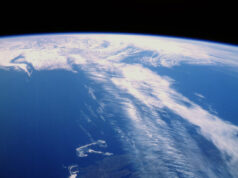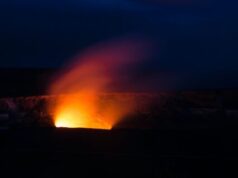Slash-and-burn: The human footprint is heaviest in the world’s biologically-richest areas, such as tropical rainforests. Here, farmers are burning the Amazon rainforest for charcoal.Credit: William Laurance
A James Cook University scientist says a new map of the ecological footprint of humankind shows 97 per cent of the most species-rich places on Earth have been seriously altered.
JCU’s Professor Bill Laurance has taken part in a study to map the ecological effect of people on the planet. He said the news isn’t great.
“The most species-rich parts of the planet — especially including the tropical rainforests — have been hit hardest. In total, around 97 per cent of Earth’s biologically richest real estate has been seriously altered by humans,” he said.
The scientists found environmental pressures are widespread, with only a few very remote areas escaping damage.
Find your dream job in the space industry. Check our Space Job Board »
“Humans are the most voracious consumers planet Earth has ever seen. With our land-use, hunting and other exploitative activities, we are now directly impacting three-quarters of the Earth’s land surface,” said Professor Laurance.
Researchers combined data garnered from unprecedented advances in remote sensing with information collected via surveys on the ground.
They compared data from the first survey in 1993 to the last available information set from 2009.
Professor Laurance said that 71 per cent of global ecoregions saw a marked increase in their human footprints.
But he said the news was not all bad.
“While the global human footprint expanded by nine per cent from 1993 to 2009, it didn’t increase as fast as the human population — which rose by a quarter — or economic growth — which exploded by over 150 percent — during the same period.”
Professor Laurance said wealthy nations and those with strong control of corruption showed some signs of improvement.
“In broad terms, industrial nations and those with lower corruption appear to be doing a better job of slowing the expansion of their human footprint than poorer countries with weak governance. But the wealthy countries have a much higher per-capita footprint, so each person there is consuming a lot more than those in poorer nations.”
Professor Laurance said the suitability of lands for agriculture appears to be a major determinant in where ecological pressures appeared around the globe.
“The bottom line is that we need to slow rampant population growth, especially in Africa and parts of Asia, and demand that people in wealthy nations consume less,” he said.
The updated and temporally intercomparable global terrestrial human footprint maps and the data behind have been published in Nature Communications and Nature Scientific Data. Oscar Venter at the University of Northern British Colombia led this effort with support from the Wildlife Conservation Society, James Cook University, CIESEN at Colombia University and the Green Fire Science lab at the University of Queensland.
Source: James Cook University
Research References:
- Oscar Venter, Eric W. Sanderson, Ainhoa Magrach, James R. Allan, Jutta Beher, Kendall R. Jones, Hugh P. Possingham, William F. Laurance, Peter Wood, Balázs M. Fekete, Marc A. Levy, James E. M. Watson.Sixteen years of change in the global terrestrial human footprint and implications for biodiversity conservation. Nature Communications, 2016; 7: 12558 DOI: 10.1038/ncomms12558
- Oscar Venter, Eric W. Sanderson, Ainhoa Magrach, James R. Allan, Jutta Beher, Kendall R. Jones, Hugh P. Possingham, William F. Laurance, Peter Wood, Balázs M. Fekete, Marc A. Levy, James E. M. Watson.Sixteen years of change in the global terrestrial human footprint and implications for biodiversity conservation. Nature Communications, 2016; 7: 12558 DOI: 10.1038/ncomms12558











